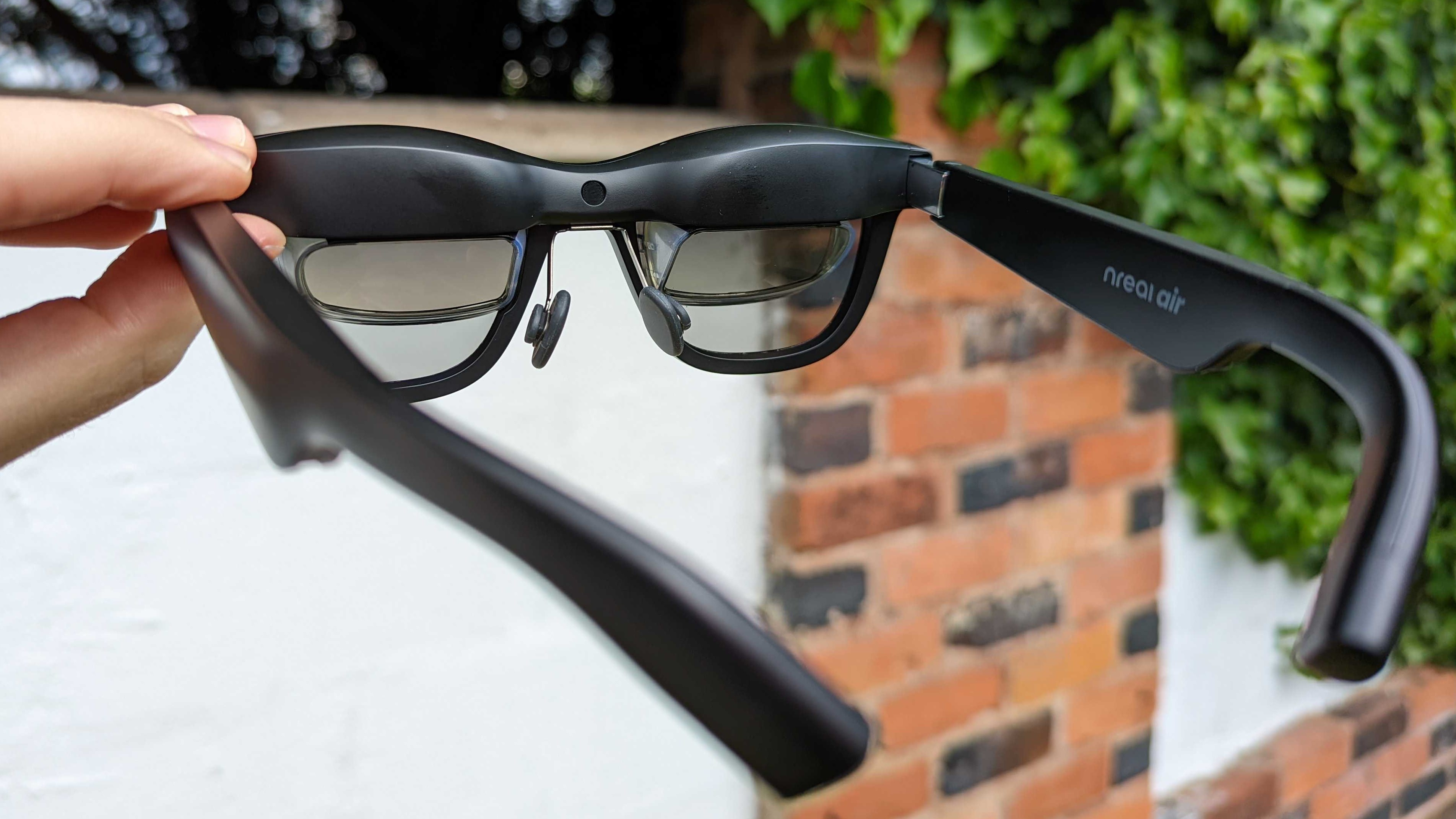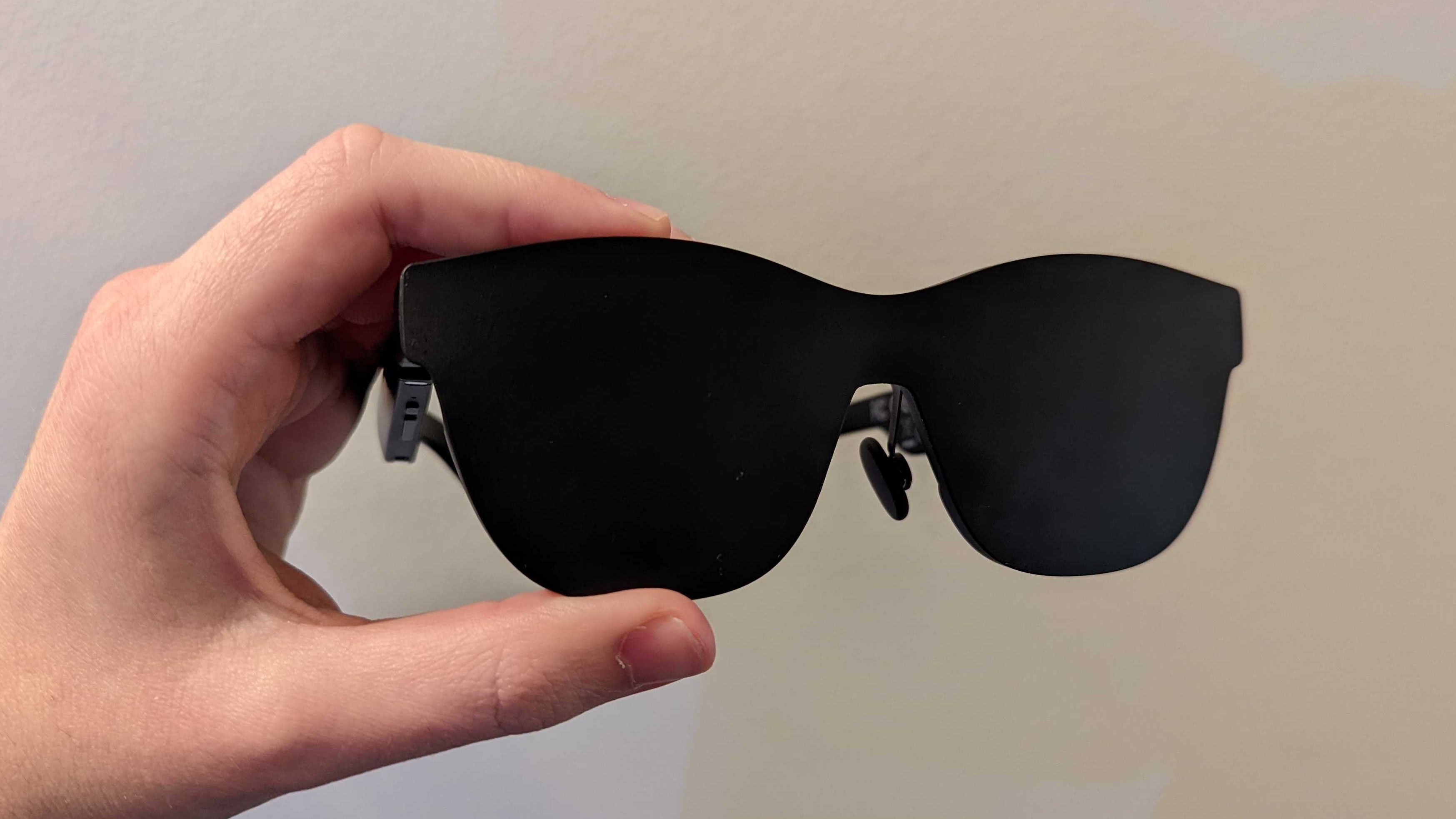The Nreal Air AR glasses aren't the first device in this category to launch, but their usefulness and relatively budget-friendly price could see them achieve more mainstream appeal than their predecessors and rivals.
Essentially, the Nreal Air are a pair of sunglasses that you can connect to your phone to have your display appear in front of you – floating in front of you like your own portable TV. Using these, you can enjoy Netflix, Xbox Cloud Gaming, or a slew of other entertainment apps as if you were in front of your TV at home on your couch.
In the short time we've had testing these glasses, we were impressed by the solid HD image and comfy fit, the latter a result of the lightweight design. But these glasses aren't perfect. One major annoyance is the incredibly short list of compatible smartphones.
Once we've spent a bit more time with them, we'll be sure to flesh out this review and include our final verdict on whether the Nreal Air are a must-have gadget. But for now, here are our first thoughts on these AR glasses.
Nreal Air AR glasses: price and availability
The Nreal Air AR glasses are currently available to buy in the US and the UK, exclusively from Verizon and EE respectively, for $600 / £400.
Those of you in the UK that are already EE customers can choose between paying a single upfront cost or spreading it out using EE’s Add To Plan purchase option. The latter turns the cost into a £10 upfront payment, then £35/month for 11 months – for a total cost of £395.

Nreal Air AR glasses: design
Unlike previous iterations of AR glasses, the Nreal Air look a lot more like a standard pair of specs. An eagle-eyed onlooker might spot the few key differences, but there aren’t any cameras, so the AR aspect is not that obvious.
The decision to go camera-less instantly solves many of the privacy concerns that plagued previous devices, such as the Ray-Ban Stories and Google Glass. You don’t have to worry about your vision being tracked, and those around you can rest easy knowing they aren’t being recorded without their consent.
Still, there are some signs that these aren’t regular glasses. In order for the Nreal Air to function, they need to be plugged into your phone. Using the USB-C to USB-C cable in the box, you can easily hook up your devices through a port hidden at the end of one of the glasses’ arms.
While not as free as a completely wireless device – like a pair of Bluetooth headphones – we never had any issues moving our head around while plugged in. It caused so few issues while we were wearing the glasses that we actually completely forgot about the cable – except when taking the glasses on and off.
The reliance on your phone's power means these glasses are pretty light, just 90g (0.2lbs) – they don't have an internal battery. But in exchange, they will drain your phone's battery fairly quickly, particularly if you're using them for an extended period of time.
The other dead giveaway that the Nreal Air aren't a normal pair of glasses are the inner lenses. These are what give the glasses their AR capabilities, reflecting an image of your phone’s screen in such a way that it appears to be floating in front of you.

There are also two small speakers on either arm of the glasses, as well as brightness controls and an on/off button on the right arm. We never had much reason to dim the screen, so we definitely would have preferred the brightness controls on the arm be replaced by managed audio; to change the sound levels, you have to rely on your phone’s – or headphones’ – controls.
In addition to its power cable, every pair of Nreal Air glasses comes with a carry case that can be used to store it; additional nose pieces that you can use to help the glasses fit better; and an optional attachment that can be fitted with prescription lenses. You’ll also get a plastic lens cover. This cover will give your glasses some added protection as well as privacy and clarity, serving as a backdrop for what you’re watching to help make the image clearer.
Nreal Air AR glasses: performance
The Nreal Air AR glasses are more like a portable personal projector than a TV that fits in your pocket.
By this we mean that the image through the glasses is best when you’re looking at an opaque, plain background in a room that isn’t filled with bright light. If you’re outside or facing a light source, you’ll need to attach the optional visor to have any chance of seeing what’s being displayed.
That being said, the glasses’ HD image is pretty impressive. The colors aren’t as vibrant as we’d like and the lack of 4K resolution is a little disappointing but the device’s relative screen size more than makes up for it. It’s roughly the same size as having a 130-inch TV 4m away from you – while not completely vision-filling, it is certainly more immersive than staring at your phone screen.
The audio performance is, in a word, fine. It’s certainly less dynamic than a great pair of headphones, but is more than passable if you don’t mind those around you overhearing what you’re listening to. Thankfully, if you decide to use headphones the AR glasses speakers will automatically mute themselves, just like your phone does.
It’s not just the glasses’ specs you need to think about though, as the Nreal Air is only compatible with certain smartphones. This includes the Samsung Galaxy Z Fold 3, the Samsung Galaxy S21 5G, and Oppo Find X5, in addition to several others you can find on the full official list.
This list is disappointingly short. What makes matters worse is that compatibility is determined by the smartphone’s hardware. If you’re keen to try these out for yourself, then you most likely will need to get an all-new phone, unless you’ve already got one of the usable handsets. We wouldn't advise trying to hold out for your handset to get a software update.

Nreal Air AR glasses: early verdict
The Nreal Air AR glasses have worked surprisingly well in our tests so far. Whether we’re at home on the couch, taking a break in the office, or trying to pass the time on our commute, the screen mirroring function has more than delivered what we were promised.
Sure, the HD image won’t blow you away with incredible visuals but the near vision-filling image is more than good enough to immerse you in your favorite show or video game.
That being said, the device certainly has its flaws, including clunky controls and limited AR functionality – it projects an image in front of you and that’s about it. The limited selection of compatible phones is also worrying.
from TechRadar - All the latest technology news https://ift.tt/y2O9Z8b

No comments:
Post a Comment